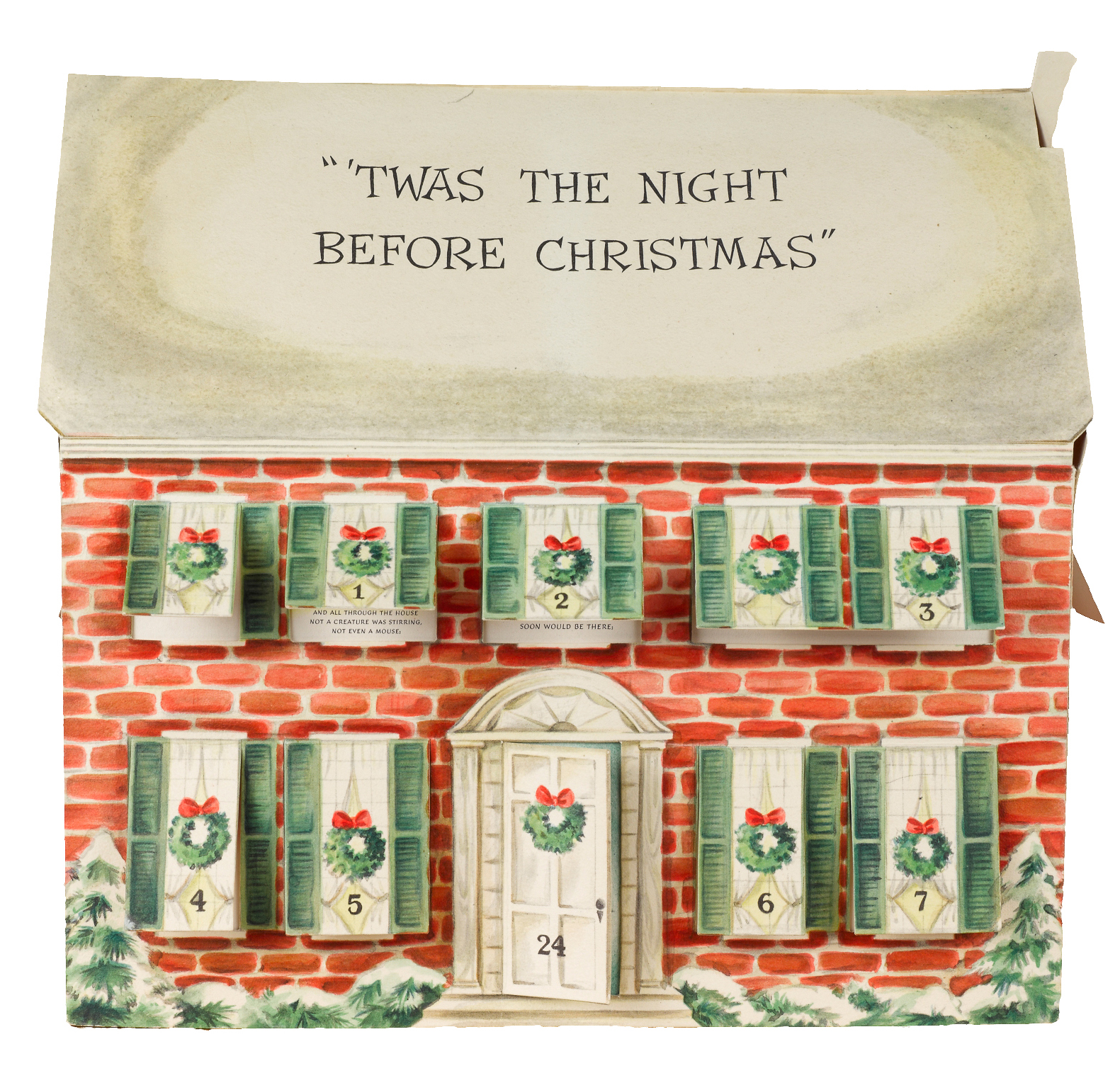Although I generally photograph books and flat documents, I occasionally have the opportunity to photograph three-dimensional objects. Depending on the type of object (this fold-up calendar, cuneiform tablets, a mummified crocodile!), I use different lighting setups and camera techniques. As I photograph these rare objects, I’ve become more and more interested in trying to represent them in as close to three dimensions as possible.
In lieu of a 3-D scanner, I have been experimenting with creating 360˚ rotating views of the objects. Done as sort of a proof-of-concept project, I photographed this Advent calendar, part of our Harris Broadsides Collection, using 360˚ rotating processes.
The process is actually pretty straightforward: you set up your camera and lights (all your settings and positioning must stay the same); and your object must be stable, and centered on a surface that can be rotated in small increments (as close to every 5˚ or every 10˚ as possible). While you can buy these devices, we took a more DIY route and made one using a lazy susan. To ensure that I rotated each shot only 10˚, my coworker generated an Adobe Illustrator file that had each 10˚ marked out exactly. While we have since started using a 5˚ model for better accuracy and more smooth rotations, it worked quite well:

The two different printouts I use when making 360˚ images.
Left: the printout used for this setup, with markings every 10˚, yielding 36 shots;
Right: our newer printout with markings every 5˚, yielding 72 shots.
I then used the Illustrator printout to mark off 10˚ on the lazy susan, centered the calendar on the surface, and began shooting. I lined up a spot on my shooting table which I could line up with each marking, and made my shots. I ended up with 36 images, and removed the background from each one.

The Advent calendar with background,
showing its placement on the lazy
susan and the 10˚ markings used in capture.

The same image, with the entire background masked out using clipping paths (just as in the “Coffee Pots and Clipping Paths” post).
While we can upload the images to the web and create interactive rotation using HTML5 & JavaScript, we can also produce movies that allow for a similar viewing experience. We also hope to work with our repository team to add zoom and angle-of-view functionality. Below is a sample movie:
